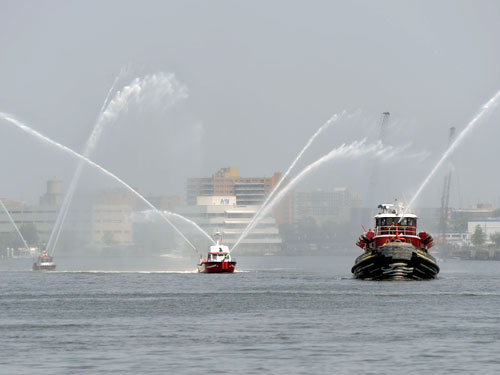
The Elizabeth River, which was named after England’s Princess Elizabeth by Capt. John Smith is one of Hampton Roads Virginia’s most important waterways.
The Elizabeth River is formed by three primary branches, known as the Eastern, Southern, and Western branches. The river’s main branch is approximately 6 miles long and 2 miles wide at its mouth.
Several tributaries of the Western and Southern branches originate within the Great Dismal Swamp. The Lafayette River joins the Elizabeth near the Port of Hampton Roads.
The banks of the Elizabeth River are lined with United States military installations, historical sites, and other landmarks. The Norfolk Naval Shipyard is the oldest and largest naval shipyard in the United States.
The river provides a vital pathway for vessel traffic between Hampton Roads, Norfolk, Portsmouth, and Chesapeake. The Elizabeth River is also a popular destination for power boaters, sailors, kayakers, fishermen, and nature enthusiasts.
On the main branch of the river, public access points can be found at several locations. In Norfolk, Whitehurst Beach park offers views of the lower river’s activity. Nearby is the ODU Sailing Center and pier.
At Plum Point Park, paddlesports enthusiasts can launch kayaks and other small craft from a launch area. Located near the park are the mid-town tunnel, Fort Norfolk, shipyards, Portsmouth Marine Terminal, Scott Creek, Smith Creek, The Hague, Battleship USS Wisconsin, and other landmarks.
Other waterfront access points in Norfolk include the Bea Arthur Dog Park, Freemason Harbor, Town Point Park, Elizabeth River Trail, and Waterside Prominade.
On the Portsmouth side of the river, Hospital Point Park, Fort Nelson Park, Portside Park, and Riverfront Park offer scenic views and other experiences.
The Elizabeth River Ferry provides pedestrian ferry crossings on the Elizabeth River between Portsmouth and Norfolk. The ferry departs from High Street Landing and North Landing in Portsmouth and arrives at Waterside in Norfolk. A water taxi carries passengers between Olde Towne Portsmouth and downtown Norfolk.
The Elizabeth River forms an important part of the Atlantic Intracoastal Waterway (AIWW), a protected inland channel that extends from Norfolk, Virginia to Key West, Florida.
Vessels on the Elizabeth River travel via the Albemarle and Chesapeake Canal, which connects to the North Landing River and eventually on to the Albemarle Sound.
The Dismal Swamp Canal provides an alternate route along the AIWW. At its northern end, the canal leads to Deep Creek, a tributary of the Southern Branch Elizabeth River. The southern end of the canal leads to the Pasquotank River, which flows to the Albemarle Sound.
Decades of pollution resulted in the Elizabeth River earning a number of pollution-related distinctions, including the Environmental Protection Agency (EPA) list of impaired waters. The EPA also designated the river as one of the most highly polluted bodies of water in the Chesapeake Bay watershed and one of the most polluted rivers on the United States east coast.
In recent years, restoration efforts on the Elizabeth River watershed have begun to yield success. As restoration efforts continue, birds, reptiles, fish, shellfish, and other marine life are becoming more common.
Fish species found in the Elizabeth River include speckled trout, atlantic croaker, Norfolk spot, red drum, summer flounder, alewife, blueback herring, American shad, Atlantic sturgeon, catfish, and others.
Elizabeth River Parks and Access Points
Town Point Park
201 Waterside Drive
Norfolk, VA
Portsmouth City Park
140 City Park Ave
Portsmouth VA
Grandy Village Community Center (kayak launching)
3016 Kimball Terrace
Norfolk, VA 23504
phone (757)-441-2117
Paradise Creek Nature Park
1141 Victory Boulevard
Portsmouth, VA 23702
Related Information